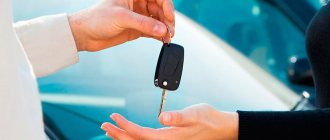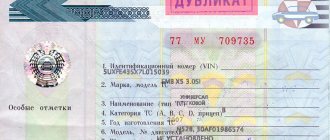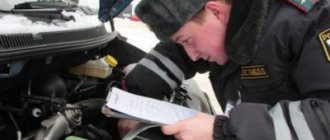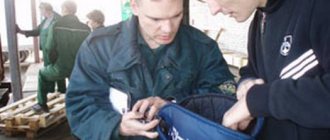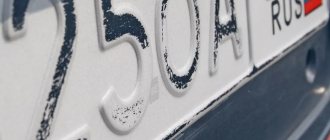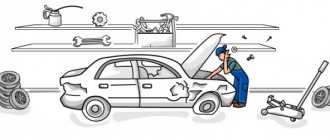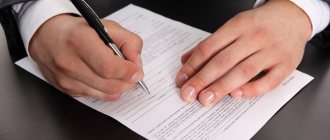Procedure
We recommend that you carry out the first check of the car at the stage of viewing advertisements. Choose the options you like, write down the license plates and check the cars using the Autocode service. The system will issue a report with a detailed history of the car. If the information in the ad contradicts the report data, it is better to immediately abandon this option and not waste time meeting with the seller. Most often, sellers hide the real mileage, number of owners, work in a taxi and participation in an accident.
Start the meeting by checking your documents. Next, proceed to a visual inspection of the car. After that, take it for a test drive. Finally, go with the seller to the service station. Specialists will identify all the technical flaws of the machine. This will allow you to bargain or even refuse to buy a bad vehicle.
How to order a check of all parameters at once
When planning to purchase a used vehicle, you need to have access to the AutoHistory service at hand. We will check the car you are interested in at several points:
- history of registration actions, including the number of owners;
- presence of restrictions;
- participation in an accident;
- fines;
- average market value;
- tax amount;
- issued insurance;
- passed technical inspection;
- factory specifications, etc.
Our service cooperates with more than 20 databases, collecting only reliable and relevant information. A report on a car can be prepared in 15 minutes; you will receive the result in your personal account and by email.
A state inspection will be required to inspect the vehicle. car number or VIN. You can submit a request on the service website or in the mobile application. The advantages of our service include:
- quick check;
- convenient payment system, there are several ways to pay for the report;
- reliable, important information;
- There is no need for a VIN code, it is enough to know the state license. car number;
- low cost of the report.
AutoHistory is a quick and effective way to ensure that your car is legally clean. We inspect any vehicles, including motorcycles and special equipment. Check out the sample report and make sure of the high quality of the service provided.
Documentation check
Before buying a used car, it is important to check the documentation:
- PTS;
- vehicle registration certificate;
- seller's passport.
Make sure that there are no special stickers or marks on the PTS. What's the catch here? Marks are placed in cases where the body or engine numbers are interrupted, unreadable or unreadable.
Be wary if the seller provides you with a duplicate title. A duplicate PTS is issued if the original was lost or damaged, and also if there are no free lines left to enter the owners of the car. Therefore, you need to check with the seller how many owners the car had and for what reason the duplicate was made.
Also read: What the PTS will tell you: how buyers of used cars are deceived
But don’t rush to refuse to buy a car just because it’s a duplicate. Check your car using the Autocode service. If the verification data does not contradict the seller’s words, then there is nothing to fear. If the service reports that the vehicle had two or more owners, and the seller claims that he is the first and last owner, then it is better to refuse the transaction.
Be sure to check the data from the seller’s passport with the data specified in the PTS. Even small differences in documents may subsequently lead to you not being able to register the car.
How to check documents for a car when purchasing
Verification of documents that are the basis for acquiring the seller’s ownership of a car, as well as verification of compliance with the norms of the Family Code of the Russian FederationChecking these documents is very important, because if the seller’s ownership of the car is challenged, then the possibility of challenging the transaction you are making to purchase the car is not excluded. It is necessary to check the documents on the basis of which the seller of the car acquired ownership of it (sale/donation/exchange agreement, certificate of inheritance, etc.). If the car was purchased by the seller under a consideration transaction, then it is necessary to check whether it was paid for or whether the corresponding compensation for its price under this transaction was transferred. It is also necessary to check whether the seller was in a registered marriage at the time of purchasing the car and whether the car is the joint property of the spouses. If the car is the joint property of the spouses, then it is necessary to obtain the consent of the spouse to sell the car. A complete list of documents for verification is available on the website of the expert system for identifying legal risks when purchasing a Riskover car (link to this list). There are also a lot of nuances when conducting an inspection, and therefore it is recommended to use a special Internet service when conducting such an inspection.
Checking the car body, external parts and engine
According to clause 11 of the Basic Provisions for the admission of vehicles to operation, approved by Resolution of the Council of Ministers - Government of the Russian Federation dated October 23, 1993 N 1090, operation of a vehicle that has hidden, counterfeit, altered numbers of components or assemblies or registration plates is not allowed. A car that is listed as stolen, as well as in which the numbers of components / or assemblies have been changed, must be returned to the owner. What should you do when buying a car to protect yourself from a situation in which you could lose it because it was stolen? Inspecting your vehicle is definitely important. But only an examination can determine the broken body and engine numbers. Check the glass. On modern cars, the vehicle identification number (VIN) may be indicated under the glass. This number must be compared with the VIN of the vehicle indicated in the vehicle passport (PTS) and certificate. If you have a service book, then you need to check the VIN indicated in the service book with the VIN under the car glass, as well as with the number in the title and certificate. It is necessary to inspect the engine and body numbers to identify the presence of paint particles, welding, and uneven thickness of the signs. Even a minimal discrepancy raises doubts about the advisability of purchasing a car. Of course, you need to compare these numbers with the numbers in the PTS, certificate and service book (if available). If the seller does not have a PTS or only has a duplicate PTS, this should alert you, because According to the practice of banks, the title is often transferred to them for storage when pledging the car. Thus, if the title is missing or a duplicate is presented, then there is a high probability that the car is pledged. If there is a duplicate PTS, then it is possible that the car is pledged to the bank, the PTS is in the bank’s storage, and the seller received a duplicate PTS by filing an application for the loss of the PTS. Check whether information about the car pledge is available in the movable property pledge register. If you are buying a car that is pledged, you must obtain the written consent of the mortgagee to sell the car to you. Check the PTS to see if it is counterfeit. You can read how to do this on the website of the expert system for identifying legal risks when buying a Riskover car (link here).
Documents for the car and identification documents of the seller
It is imperative to check the seller’s identification documents (usually a passport). Take from the seller a written statement confirming that the car is not mortgaged, under arrest and not encumbered by the rights of third parties (or, if there are encumbrances on the car, let the seller indicate in this statement all the existing encumbrances). Ask the seller if the car was purchased with a loan/loan. If the car was purchased on credit, check which bank and ask the seller to present a certificate from this bank confirming full repayment of the loan debt. Compare the car body number with the information specified in the title and certificate. When registering a car with the State Traffic Safety Inspectorate, checking whether the actual engine number matches the data specified in the documents has not been carried out since 2011. Inspect the registration plates on the car if the car has not yet been deregistered (they must correspond to the vehicle registration certificate). If the car has already been deregistered, be sure to inspect the transit numbers. You can compare when the car was deregistered and when, according to the seller, he contacted the traffic police to deregister the car. 5. Ask the seller for an MTPL policy. Compare the information in the PTS and certificate with the MTPL policy: - VIN of the car; — state registration plate; — series and number of PTS; — series and number of the driver’s license of a person who is allowed to drive a vehicle. A careful inspection can help identify inconsistencies in the documents and understand that a different car is being sold than what is indicated in the documents.
Check the car for theft in the traffic police database.
Invite the seller to go to the nearest traffic police post to check the car for theft. In addition, the car is checked for theft by an expert bureau. The cost of such a service is from 2500 rubles. The result of the work of such a bureau is a forensic examination report that confirms or refutes the fact of car theft. This check is useful because it uses data not only from the Russian database (available from the State Traffic Safety Inspectorate), but also from international databases. On the official website of the State Traffic Inspectorate of the Ministry of Internal Affairs of Russia there is a special service for checking whether a car is wanted by the vehicle identification number (VIN), and if it is missing, by the body or chassis number. However, at the time of writing this article, the operation of this service was temporarily suspended (according to the information on the website).
Useful articles - How to check documents for a car when purchasing
Checking your car for fines
There is always a possibility of purchasing a car with outstanding fines. Often, sellers themselves do not know about the debts to the traffic police, but sometimes they deliberately withhold information so that all debts fall on the new owner.
Of course, if you buy such a car, you cannot be forced to pay these fines; this is the responsibility of the former owner. However, there are situations when, due to non-payment of fines, registration restrictions are imposed on the car. In this case, the new owner will not be able to register the car.
To identify the presence of fines, you can use the following services:
- official website of the traffic police;
- Autocode service.
To check a vehicle through the official website of the traffic police, you need to know both the license plate number of the car and the number of the registration certificate. To check using the Autocode service, you just need to know the license plate number of the car. At the same time, from the report, in addition to the history of fines, you will learn data on mileage, technical inspections, compulsory motor liability insurance, restrictions and much other important information.
How to check a car before buying
We work only with trusted sources, provide up-to-date information.
We securely store information about users.
Average waiting time for a report – 30 minutes
Low cost of service
Buying a used car, although financially beneficial, is very risky. Behind the beautiful outer shell there may be legal restrictions and technical shortcomings. To look at the car from all sides, you need to order a check.
Checking the car for collateral
If a car owner takes out a loan secured by a vehicle or a car loan, then the car is collateral. If you do not know this information when purchasing, then the bank or mortgage holder may subsequently oblige you to repay the loan or collect the collateral from you.
You should not immediately refuse to buy if the car is pledged to the bank. Sometimes credit institutions themselves put up for auction and sell interesting models at a fairly low price.
How to check whether a car is considered collateral? To do this, you can use the following sites:
- register of the notary chamber;
- Autocode service.
To check a car through the registry of the notary chamber, you need to know information about the pledgor, the registration number of the notice and the VIN of the vehicle. For Autocode, a VIN or license plate number is sufficient.
For professional car sellers, we have developed a service for unlimited car checks “Autocode Profi”. “Autocode Pro” allows you to quickly check a large number of cars, add comments to reports, create your own lists of liquid vehicles, quickly compare options and store data about cars in an orderly form. A subscription to unlimited car checks costs 2,500 rubles per month.
Risks when buying a used car
When choosing a used car, you run the risk of getting a vehicle with serious flaws:
- Hijacking. Stolen cars are resold with altered license plates and forged documents. Buying such a vehicle entails loss of money and car.
- Pledge. A car purchased with a car loan may be pledged to the bank. It will not be possible to re-register such a vehicle, but you can easily lose it if you fail to repay the loan.
- Arrest. Debts to bailiffs lead to seizure of property. And the car suffers first. You will not be able to arrange transport for yourself.
- Road accident. Minor accidents do not affect the functionality of the car, but serious accidents even disrupt the geometry of the body. After major accidents, even a fully restored vehicle should be sold at a reduced price.
Legal and visual inspection of a car before purchase reduces the risk of losing money and vehicles.
Mileage check
More than 50% of car sellers inflate mileage. This procedure costs from 1,000 to 3,000 thousand, while the owner increases the cost of the car when selling it by a larger amount.
Also read: How sellers cheat mileage
You can check the veracity of mileage data in several ways:
- check documents;
- carry out a proper inspection of the vehicle;
- contact specialists.
Also read: How to check car mileage
Check for participation in traffic accidents
More than 75% of cars have been in an accident at least once, and sellers often try to hide this fact.
We talk about the signs of a damaged car and how to check for participation in an accident in a separate article.
If during inspection of the car you notice signs of repair, check the car using Autocode. From the report you will find out where, when and what type of accident the car was involved in.
Checking for restrictions
Beware of car purchases that are subject to restrictions. We have prepared a special material in which we talk about restrictions on cars and what they can mean for the new owner.
In what cases are restrictions imposed:
- if the customs authorities have suspicions that the vehicle was cleared through customs under a “gray” scheme;
- if the vehicle is the subject of a dispute in court;
- if the owner of the car is obliged by court to pay a bailiff a certain amount of money.
Also read: What are the risks of buying a car that is seized?
You can check your car for restrictions on the official website of the traffic police. To do this, you need to know the VIN code or chassis number.
The check can also be carried out through the official website of the bailiffs. To do this, you need to know the owner’s passport details, SNILS or TIN.
Users of the Autocode service can learn about restrictions
, imposed on the vehicle, according to the license plate number.
What you can check yourself
First of all, you need to check the car for serious damage or breakdowns. The photographs in the ad do not give an objective picture, even if the seller honestly pointed out the flaws in the body. For a visual inspection, the car must be clean and located in an open area (not in a garage). Choose a sunny day or at least daytime.
Check what:
- Body – presence of chips, scratches, dents, “saffron marks”. If there are stickers on the car, remove them - defects are often hidden under them.
- Doors - how they close, whether the sound is the same when closing. If not, then the geometry of the car is broken.
- Under the hood, where the bumper and side members are attached, there should be no folds of metal or chipped paint, which indicates that the body has been “stretched” after serious damage.
- In the cabin - the integrity and serviceability of the dashboard, the absence of mold under the rugs and the smell of dampness.
- Headlights - look at the condition inside. Foggy headlights are a sign of a drowned car.
These are the main points that require attention before purchasing. If you are satisfied with the visual inspection, order a detailed technical check at the car dealership. The technician will evaluate the external and internal condition of the car and determine its average cost.
Checking a car for theft
If you purchase a used car that is listed as stolen, there is a chance that you will have to sue the owner who has turned up. In 85% of such situations, the judge obliges the new owner to return the vehicle to its real owner. In this case, you will lose not only the car, but also the money spent on it. It is unlikely that you will be able to get your money back from a fraudster who hid the fact of the theft during the transaction.
Also read: How stolen cars are sold and how to check for wanted cars
To check, you can use the following methods:
- check through the official website of the traffic police;
- together with the seller, deregister the car (if the car is stolen, the seller will not be able to carry out this action).
You can also use Autocode and get a more detailed report about the car in just 5 minutes.
Testing for work in a taxi
"Autocode" provides its users with the opportunity to check whether the vehicle is registered with official taxi services.
If a service check gives you such information, then it is better to refuse the purchase. Such a machine, even if it is relatively young, has most likely practically exhausted its service life. That is, you will face constant repairs that require large financial investments.
Also read: A car after a taxi: how to recognize it and whether it’s worth buying
Checking a car for recycling
These days, a new fraud scheme has emerged among unscrupulous car owners. They deregister the vehicle, dispose of it, and try to sell the vehicle as soon as possible at a fairly low price. As a rule, buyers are attracted by cheapness. But needless to say, it will not be possible for you to register such a vehicle. Money will be thrown away.
Also read: How to check a car for scrap, what are the risks of buying a scrap car
Whether the car was scrapped or not can be found out from the Autocode report.
To do this, just enter the license plate number of the car.
In addition, you can contact the traffic police with a statement. However, this will require the personal presence of the car owner. Or you can use the official website of the traffic police. In this case, you need to know the VIN.
Technical check
Technical verification is no less important than legal verification. During it, you will be able to visually identify all the shortcomings and defects of the vehicle. We will tell you how to properly check.
When checking a car, you need to pay attention to the following aspects:
- tire wear;
- presence of corrosion;
- paintwork;
- replacement of body parts;
- repairs on the slipway;
- motor operation.
Also read: How to check a car using a thickness gauge
Also read: How to check whether a car has been in an accident
To entrust the technical inspection to a specialist, use the on-site inspection service. An expert will be on site at the right time and will examine the car using special instruments.
Verification of documents
The seller must have three main documents on hand: PTS, STS and civil passport. What to watch:
- PTS – signs of counterfeit (uneven font, lack of seal), matching VIN code, owner’s full name. Pay attention to the number of owners - if the car is relatively new and has already had more than 3-4 owners, then this indicates possible shortcomings. A stamp with the inscription “duplicate” indicates that this is not the original PTS. We look for the reason in the “Special notes” column.
- STS – the owner’s data and vehicle characteristics must match the PTS. And don't forget to make sure it matches the VIN (check under the hood).
- Passport - look at the owner’s data, compare with PTS and STS.
Lawyers will help you verify the authenticity of documents. You can also contact any traffic police department. If a seller is trying to sell a car using fake documents, then one request to contact the authorities for verification is enough to weed out the fraudster.
Test Drive
A test drive is an integral part of checking the technical condition of a car. If the seller of a used car insists that he does not have time to drive around the city, then it is better to refuse the purchase. Most likely, serious shortcomings that appear while driving are being hidden from you.
Before the test drive, ask the seller what investments will be needed after purchase. Most often, under the guise of minor flaws, quite large problems are hidden that will require a lot of money. Carefully remember all the faults that the seller mentions. They will have to pay more attention during the test drive.
Also read: How to Test Drive a Used Car
While driving, go at both low and higher speeds. Check for any unusual noises or knocks. For example, if the steering wheel vibrates when driving, this may subsequently lead to replacing the box. And such a procedure costs at least 30,000 rubles.
